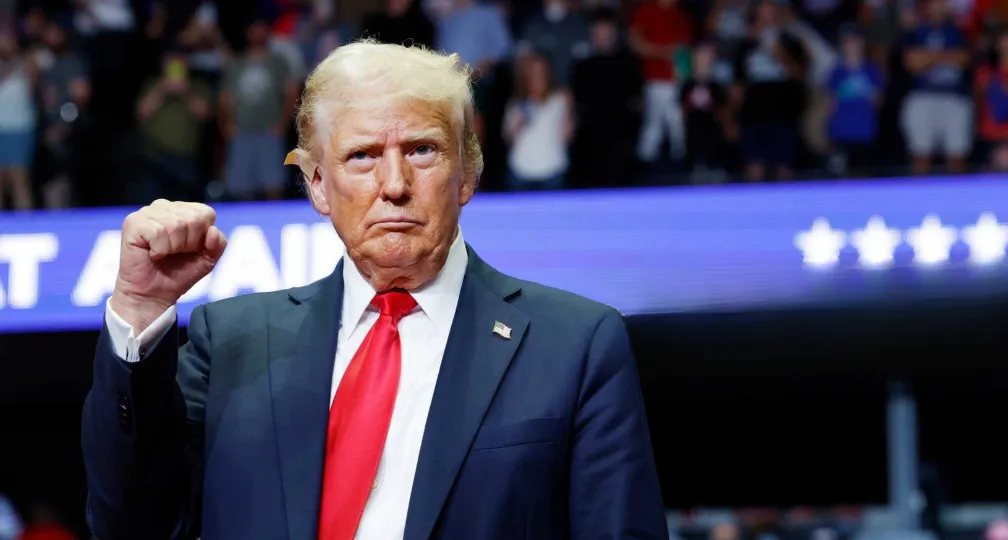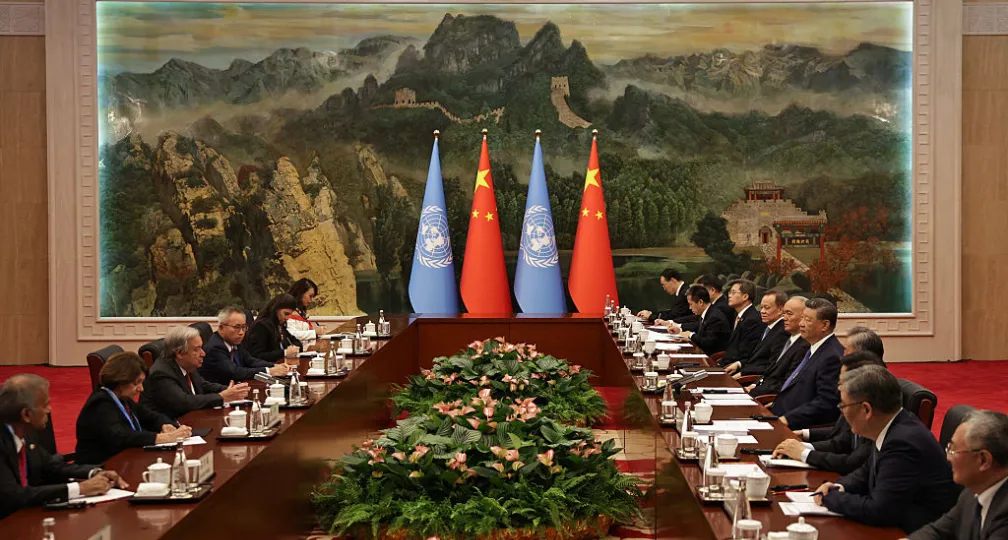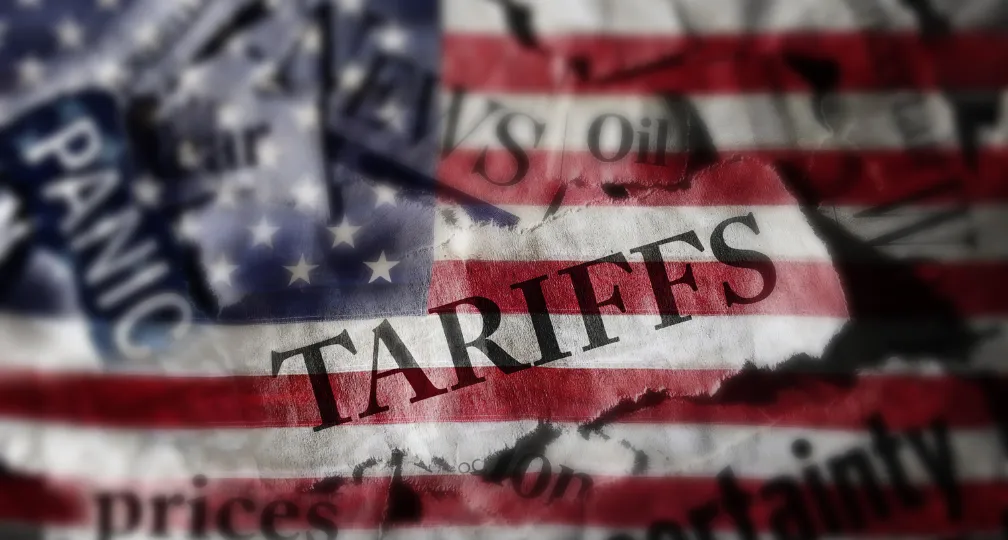IOG Economic Intelligence Report (Vol. 3 No. 25)

The latest regulatory developments on economic security & geoeconomics
By Paul Nadeau, Visiting Research
Fellow, Institute of Geoeconomics (IOG)
Latest Restrictions on Tech Exports to China: On December 3, the U.S. Department of Commerce’s Bureau of Industry & Security (BIS) announced new restrictions on the sale of 24 types of advanced semiconductor manufacturing equipment and highly advanced semiconductors to China. The restrictions include the addition of 140 new companies to the Commerce Department’s entity list, meaning that U.S. firms will be barred from doing business with them without obtaining special permission. There are also restrictions on three software tools used to develop and produce semiconductors, as well as controls on U.S.- and foreign-produced high-bandwidth memory chips used in artificial intelligence (AI) and investment companies allegedly linked to China’s military. The rule additionally lowers to zero the amount of U.S. content that determines when certain foreign items are subject to U.S. control.
Industry officials told Politico that the announced restrictions were scaled-down forms of earlier proposed restrictions, which originally targeted more companies and more suppliers to Chinese firms like Huawei, but reached their announced form following lobbying from chip companies and negotiations with Japan and the Netherlands.
China Retaliates with Critical Mineral Controls, Sanctions on Defense Companies: On December 3, China announced that it would ban exports to the United States of the critical minerals gallium, germanium and antimony, strengthening enforcement of the existing limits on exports of these minerals which were imposed last year. Gallium and germanium are used in semiconductors, germanium is also used in infrared technology, fiber optic cables and solar cells, antimony is used in bullets and other weaponry, and graphite is the largest component of electric vehicle batteries by volume. In 2024, China has accounted for 48 percent of antimony production, 59.2 percent of refined germanium output and 98.8 percent of refined gallium production.
On December 5, China announced sanctions under its recently-established Anti-Foreign Sanctions Law on 13 U.S. defense firms in retaliation for the Biden administration’s recent sale of weapons to Taiwan. The moves, which prohibit sanctioned companies from doing business in China, are largely symbolic since these companies are already barred from doing business in China due to U.S. restrictions.
New U.S. Tariffs on Solar Panel Imports: The U.S. Commerce Department announced new tariffs on solar panel imports from Cambodia, Malaysia, Thailand, and Vietnam in a preliminary decision following a case brought by the American Alliance for Solar Manufacturing Trade Committee that accused factories in these countries of dumping products made in China onto the market. The Commerce Department is set to make its final determinations on April 18, 2025, with the International Trade Administration set to finalize its determinations on June 2 and final orders on June 9.
U.S. Treasury Finalizes Energy Investment Tax Credit Rules: On December 4, the U.S. Treasury Department and Internal Revenue Service finalized the investment tax credit rules for energy projects. The rules provide guidance on the types of properties that can receive Section 48 investment tax credit, a list which was expanded under 2022’s Inflation Reduction Act which allows owners of clean energy projects to receive 30 percent back on their investment.
OFAC Sanctions Venezuelan Officials: On November 27, the U.S. Treasury Department’s Office of Foreign Asset Control (OFAC) announced sanctions on 21 security and cabinet-level officials aligned with Venezuela’s Nicolas Maduro in response for their actions following the July presidential election in Venezuela.
Costa Rica Begins CPTPP Membership Process: Members of the Comprehensive and Progressive Trans-Pacific Partnership (CPTPP) formally extended a membership invitation to Costa Rica at a formal meeting of the commission overseeing CPTPP in Vancouver. Negotiations will now begin on Costa Rica’s ascension to the trade bloc, including a review process by the current members.
Analysis
There have been and will be many articles dedicated to deciphering Donald Trump’s international trade policy. While every incoming administration presents a set of unknowns before they enter office, with Trump, the ambition and his past record as the “tariff man” makes understanding the apparent idiosyncrasies a more high-stakes effort. While there’s the benefit of taking lessons from Trump’s first term in office and less of a “Trump Shock” today than in 2016, simply drawing a line from Trump’s term to his second needs to account for the fact that there’s a lot that’s different. Trump is the first Republican since George W. Bush in 2004 to win the popular vote and his party controls both chambers of Congress, all of which lead Trump and his team to believe they have a mandate for transformational change, not least of all for how the United States does business with the world.
It’s at least safe to expect that global trade policy is about to become less predictable and no one will know anything for certain about anything – indeed, trade policy via social media posting already seems to be in full form with Trump’s announcement of tariffs on Canada, Mexico and China. Still, companies and CEOs will have a better picture of what a Trump trade policy looks like and will plan accordingly. Companies, often with the help of governments, have worked hard to improve their resiliency to tariffs and other disruptions to their supply chains. Many are already adjusting their behavior, with shoe company Steve Madden announcing that it would shift production from China to Brazil, Cambodia, Mexico, and Vietnam to avoid Trump’s proposed tariffs against China and other companies are fast-tracking inventories to get ahead of the tariffs.
Despite Trump’s professed love of tariffs, there’s more to it than a simple fixation and more than a reflection of his life as a businessman. It’s an expression of an entire worldview that his team believes won a ringing endorsement from the American electorate. It begins with his sense of grievance. The fundamental premise is that the current economic order has evolved to take advantage of the U.S. economy and that the altruism that might have inspired the post-World War II liberal order is outdated and harmful. The best remedy is not to reform the system, which is based on outdated assumptions, but to completely overturn the table in a way that can reestablish U.S. predominance over the economic order.
It’s this sense of grievance that drives the determination to reshape the economic order. Trump and his team believe they have a mandate and feel the wind at their back. If there’s one thing his nominees to this point have in common, it’s a belief that the U.S. government needs a wholesale transformation in almost every aspect. Trade and economics are one of the areas of focus, but while his administration may have the ambition to remake the global trading order, it’s not clear how they’ll do this. Most basically, it might be as direct and as simple as adapting the Silicon Valley principle of “most fast and break things” to the international economy. It could mean striking out on a singular approach to trade and demanding that everyone else go along if they want to continue to do business with the United States (in truth, this wouldn’t be a big departure from where U.S. trade policy has been heading in the past decade).
Whatever it looks like, both rivals and allies will be targeted in something like an economic reprise of George W. Bush’s “with us or against us”. There’s no economy that’s really “innocent” as long as they have, in Trump’s view, taken advantage of the United States at some point. In that sense, everyone is guilty regardless of potential mitigating factors, but some have been more damaging than others. To that end, the coming administration sees tariffs as a potent tool to change economic behavior. For one, tariff levels may be linked to a country’s economic and security commitments to the United States. Scott Bessent, Trump’s appointee for Treasury Secretary, has floated the idea of scoring foreign governments as red, yellow, or green depending on how agreeable they are to Washington’s priorities, and using the score to shape policy toward that country.
Whatever the final approach looks like, there’s more to this than a simple reprise of Trump’s transactional style, where tariffs are leveraged to gain the upper hand in negotiations. Assuming that Trump is transactional isn’t a bad assumption on its own and it was certainly true during his first administration, but in his second term, emphasizing transactionalism misses the forest for the trees. The role for tariffs as a way of securing leverage probably isn’t going away, but they’re also part of a broader program to reshape U.S. relationships. Trump has shown a willingness to link issues that aren’t always obvious – priorities in one space might be conceded for the sake of gains in another space. For example there is an interest in closer links between trade policy and security policy.
What will determine whether Trump can pursue his tariff scheme isn’t whether he has the ability to do so – he almost certainly does – it’s how he and his team choose to pursue the issue. It’s an ambitious program, and it’s confronted, for better or worse, by the gravitational pull of Trump at the center of the orbit. There will be tension between the tangible policy goals of some of his advisors, the sycophancy of others around him, and Trump’s own determination to be at the center of it all. Each side feels the wind at their back and the energy of an electoral mandate, real or not. It’s not just the voices in the administration that are competing but the interests too – setting goals of a strong U.S. dollar, a lower trade balance, and Wall Street growth will be inevitably at cross-purposes. Trump’s ambition for disruption will be particularly tempered by his hopes for strong growth on Wall Street.
There are also limits to what his administration can accomplish because at the end of the day, trade decisions are business decisions. Governments can set the terms and make life easier or more difficult, but they don’t have the final word. Regardless, an administration committed to disruption and transformation will not feel much fidelity to the status quo’s rules. When many seem to see the current system wobbling with only furtive attempts to rescue it, whoever can combine action with scale will probably drive what comes next. For now, that’s the incoming Trump administration.
(Photo Credits: Shutterstock)
Disclaimer: The views expressed in this IOG Economic Intelligence Report do not necessarily reflect
those of the API, the Institute of Geoeconomics (IOG) or any other organizations to which the author belongs.
API/IOG English Newsletter
Edited by Paul Nadeau, the newsletter will monthly keep up to date on geoeconomic agenda, IOG Intelligencce report,
geoeconomics briefings, IOG geoeconomic insights, new publications, events, research activities, media coverage, and
more.


Visiting Research Fellow
Paul Nadeau is an adjunct assistant professor at Temple University's Japan campus, co-founder & editor of Tokyo Review, and an adjunct fellow with the Scholl Chair in International Business at the Center for Strategic and International Studies (CSIS). He was previously a private secretary with the Japanese Diet and as a member of the foreign affairs and trade staff of Senator Olympia Snowe. He holds a B.A. from the George Washington University, an M.A. in law and diplomacy from the Fletcher School at Tufts University, and a PhD from the University of Tokyo's Graduate School of Public Policy. His research focuses on the intersection of domestic and international politics, with specific focuses on political partisanship and international trade policy. His commentary has appeared on BBC News, New York Times, Nikkei Asian Review, Japan Times, and more.
View Profile-
 Japan-India Defense in a Fragmenting Indo-Pacific2025.12.10
Japan-India Defense in a Fragmenting Indo-Pacific2025.12.10 -
 The “Economic Security is National Security” Strategy2025.12.09
The “Economic Security is National Security” Strategy2025.12.09 -
 India - Japan: The Glimpse of a Shared Vision2025.12.05
India - Japan: The Glimpse of a Shared Vision2025.12.05 -
 Beijing’s ‘Globalist’ Agenda Under Trump 2.02025.12.01
Beijing’s ‘Globalist’ Agenda Under Trump 2.02025.12.01 -
 Trump’s Tariffs Might Be Here to Stay – No Matter Who’s in Power2025.11.28
Trump’s Tariffs Might Be Here to Stay – No Matter Who’s in Power2025.11.28
 Event Report: The Trump Tariffs and Their Impact on the Japanese Economy2025.11.25
Event Report: The Trump Tariffs and Their Impact on the Japanese Economy2025.11.25 The Real Significance of Trump’s Asia Trip2025.11.14
The Real Significance of Trump’s Asia Trip2025.11.14 The long road to a South Korea-U.S. trade deal2025.11.26
The long road to a South Korea-U.S. trade deal2025.11.26 The “Economic Security is National Security” Strategy2025.12.09
The “Economic Security is National Security” Strategy2025.12.09 India’s Structural Reforms: Opportunities and Risks2025.11.14
India’s Structural Reforms: Opportunities and Risks2025.11.14











